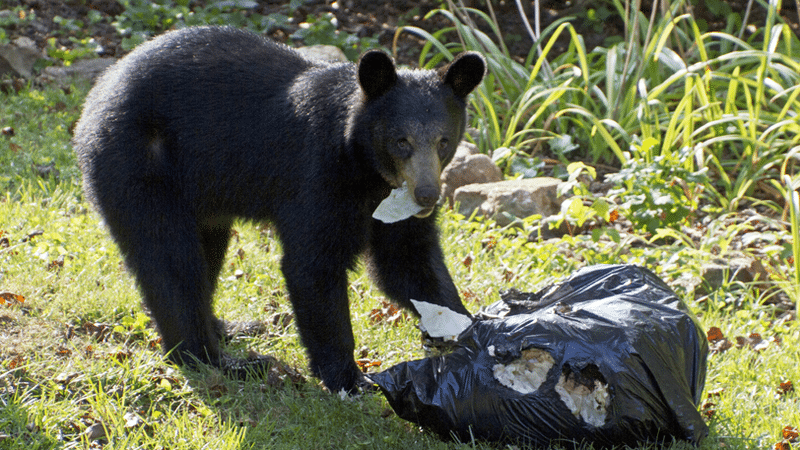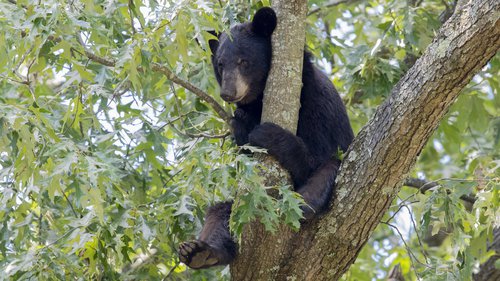Spring bear sightings don’t have to mean ‘trouble bruin’
ON 05-04-2022

May 4, 2022
Randy Zellers
Assistant Chief of Communications
LITTLE ROCK — Each spring, young male black bears emerge from their dens and strike out to find new territories. While sightings of these misguided youths certainly grab the attention of people living in neighborhoods bordering bear country, they often move on as long as people don’t give them a reason to stay.
Bears are part of Arkansas and have been since before the state was settled. In fact, Arkansas once was so rich with black bears that its official nickname was “The Bear State.” Unrestricted hunting for their fur and fat led to the bear’s rapid decline by the early 1900s. Thanks to the efforts of conservationists and biologists with the Arkansas Game and Fish Commission, Arkansas again has bears throughout much of the state in the areas they once roamed. But living with bears requires a brief mention about bear biology.
Female bears will spend two winters with their cubs: the first when they are newborns, and the second as adolescents. In their second year, female cubs will be allowed to stay in a portion of their mother’s territory, but male bears are forced away to find a new home on their own.
“It’s nature’s way of ensuring genetic diversity,” said Myron Means, bear program coordinator for the AGFC. “The young males will wander for a while until they find a new home with good food resources.”
Unfortunately, that search may land young bears in some sticky situations. Open trash cans, bowls filled with pet food and areas where people have dumped cooking grease or table scraps often attract these wayward bears. Wildlife feeders also act as magnets to these young bruins, who will take advantage of the free meal.
“The first thing we tell anyone to do when they have a nuisance bear in the area is to put away any possible foods, including deer feeders, bird feeders and dog food, and to keep trash cans locked or put away where they are inaccessible for a couple of days,” Means says. “That’s usually all it takes for the bear to move on.”
Just like grandpa told you about snakes and other scary critters, bears are much more scared of people than we are of them. But if a bear is allowed to stick around, it can begin to associate people with a free meal, and that’s when trouble starts. Means suggests people who see bears where they don’t want them, make it clear they need to move on.
“Making noise, yelling and throwing a rock or two at the bear will give it the message that it’s not welcome,” Means said. “Bears aren’t aggressive animals and they don’t have a desire for revenge or anything. They just realize the area isn’t comfortable to stay in and will go away.”
More information about bear awareness and bear safety can be found on the cooperative website www.Bearwise.org. This site was developed by bear biologists throughout the Southeast and includes information specific to Arkansas.
Recent News
Subscribe to Our Weekly Newsletter E-mails
Don’t miss another issue. Sign up now to receive the AGFC Wildlife Weekly Newsletter in your mailbox every Wednesday afternoon (Waterfowl Reports are published weekly during waterfowl season and periodically outside the season). Fishing Reports arrive on Thursdays. Fill in the following fields and hit submit. Thanks, and welcome!


